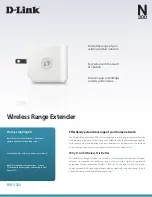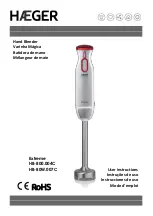
6
Dipole antenna example
Chip antenna example
Cypress Suprex® RF Series - Setup and Pre-installation
Antenna orientation and field placement:
See examples below for Suprex® RF units with
dipole antennas and “chip” ant
ennas.The orientation of the dipole
antenna is critical for performance. The antenna should always be oriented vertically. Orientation of Suprex® RF units
with an internal “chip” antenna is not as critical.
Radio frequencies in the 2.4 GHz bands have characteristics that require a direct line of sight (LOS) between the
transmitter and receiver. For best performance the antennas of the Central and Remote should “see” each other without
obstructions.
There are limited exceptions in which the signal will still pass between the transmitter and receiver without line of sight
placement. In some cases, the communication path will work but at a reduced distance.
For outdoor installations:
When possible, place the units on the exterior of buildings to reduce interference. Repeaters/
Boosters are available if needed.
Final Field Installation Checklist:
• The Central unit and access control panel should have a common ground.
• The Remote unit and card reader should have a common ground.
• The top of each unit (where antennas are located) should point up toward the sky.
• The Central and Remote units should be installed level relative to each other.
• There should be a direct line of sight between Central and Remote units (if there is no direct line of sight, a
Repeater unit is recommended).
• Both the Central and Remote units should be mounted high enough to avoid interference from obstacles
(vehicles, trains, buildings, trees, etc.).
• Metal mounting surfaces are not recommended. If use of a metal surface is unavoidable, space unit
as far from
metal surface as possible using non-metal spacer.
Unpacking:
Remove covers from units and check interior for any shipping damage. Remove any packing material if present.
Inventory any included parts (depending on model) such as antennas, coaxial cables etc.
Bench Testing:
Before installing the units in the field they should be assembled and tested at a convenient benchtop location. This will
make it easier to verify / change settings and check operation when both units are visible.
This is also an opportunity to become familiar with the system if this is the first use of the Suprex system. It is much more
difficult to set up and test the units when they are several thousand feet apart.
Both units will need to have the antenna and a suitable power supply connected. For testing purposes, the units can
share the same power supply.
Basic Bench Test:
During initial setup, refer to the Run / Configuration mode settings (pgs 7-9).
1. Connect a suitable power supply to both units. Each unit should be provided with 8 - 16 Volts dc and approx 300mA.
Units should be separated by a minimum of 24 inches.
2. Apply power. After about a 1-2 second delay, the Diagnostic LED on both units should flash green. The supervision
relay (Relay 3) activates when the units are communicating. Note: Supervision relay is disabled by default (see pgs. 7-9).
3. Touch a jumper wire from the Ground connection to the Relay 1 input on the Central unit. Relay 1 on the Remote unit
should activate with an audible click.
4. Units are shipped from the factory set for the Wiegand data format. If a different format is required, set the DIP switch to
the required reader and panel format (see pgs. 7-9)
5. If a reader & panel are accessible, connect the reader to the Remote unit & the Central unit to the panel to verify card
reads are accepted by the access control system. If troubleshooting is necessary, it is easier with units in close proximity.
6. Once these steps are completed, the units are ready for installation at their permanent locations.







































